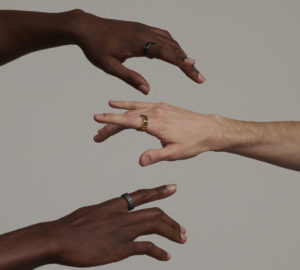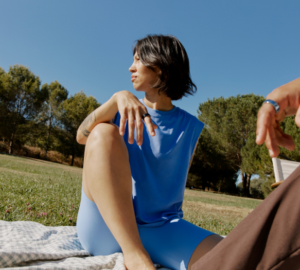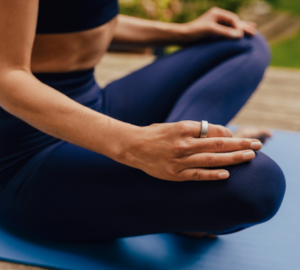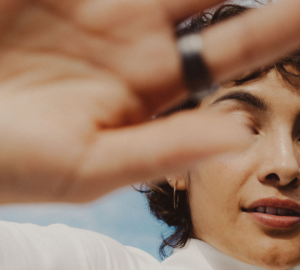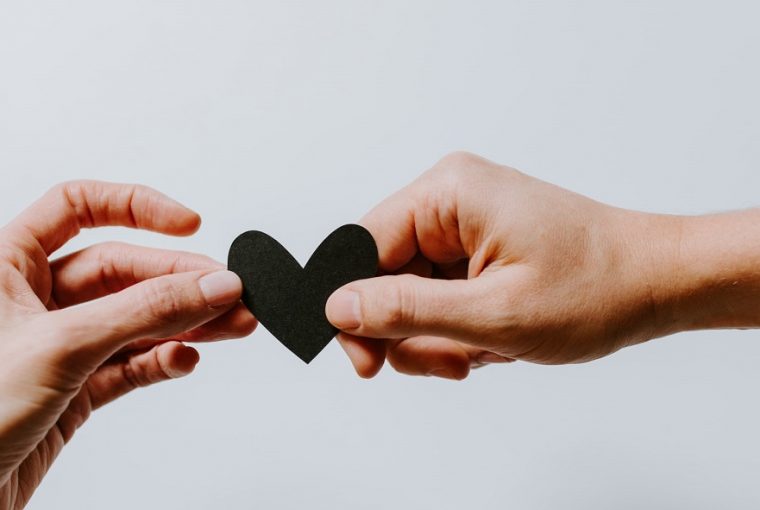Who: Anne, 61, mother, grandmother, and IT worker
Surprising Oura insight: Anne has atrial fibrillation (AFib) and used Oura to identify a third, asymptomatic AFib episode. She awoke to no heart rate data, which prompted her to seek medical attention.
What led you to Oura?
I’ve been using Oura for a long time, having used both the 1st and 2nd generation Oura Ring. I started using Oura when I was in perfect health, but now I mainly use Oura now to keep an eye out for signs of atrial fibrillation (AFib), an irregular heartbeat that can increase risks of other heart-related problems as well as stroke.
What’s your history with atrial fibrillation?
I have a history of AFib. I’ve had two episodes in the last 10 years or so. In previous episodes, I pretty much knew as soon as they started. My heart rate variation during an episode was huge, so it was easily noticed. The first one started when I was doing a training session with my trainer, and my heart rate went up to 180 while lifting weights. I could feel that increase straight away, so I knew something was wrong, but at the time, I didn’t know what the feeling meant or how serious it was.
I didn’t get to the doctor for a week or so, but by the time I did, the episode had stopped. Extensive test results were all good, so there was nothing really to be done except to educate myself about the condition so I would know what I was dealing with if it ever happened again.
While my first two episodes were manageable, the third was quite different — and Oura played a central role in the management of it.
READ MORE: What Is the Average Resting Heart Rate?
How did you use Oura to manage your AFib episode?
In 2020, I hadn’t had an episode in 6 or 7 years. But early in May, I woke up to no heart rate data in my Oura App, which had never happened before. At the time, I didn’t think much of it because I was feeling normal, so I continued on with my day. I didn’t even consider that it could be AFib.
Over the next few days, I was still not getting any heart rate data. When I’ve had AFib in the past, I’ve known about it straight away. I would go from a resting heart rate of 60 sitting down to 180 when I stood up. but this time, the variation was not so noticeable.
I was disappointed, thinking my ring was malfunctioning, so I emailed Oura Support. When I received their response about arrhythmia affecting heart rate display on the app, it all suddenly made sense. By that time, I was starting to notice that something was wrong. But Oura had picked it up far earlier. It was actually almost a week before I went and got diagnosed, but my Oura Ring had been telling me all along that there was something wrong with my heart rate, which is why it didn’t record data.
I had a cardioversion done in the hospital to jolt my heart back into normal rhythm. Immediately following that, Oura Ring started showing my heart rate data again. I have to admit I was pretty impressed, and so was my doctor! She told me to make sure I was always wearing my Oura Ring!
READ MORE: Oura & Medical Conditions
What has this experience taught you?
It’s amazing to be able to monitor what’s happening with my body. For me, devices like this are really about monitoring heart rate and having that daily update. Each morning, I can see what my resting heart rate was, and how I am recovering from the everyday stresses of life.
One of my main takeaways from this experience is don’t assume there’s something wrong with the ring if you don’t see heart rate data! It might reflect something going on with your body, like my AFib. Oura listens to your body, and your body doesn’t lie.
RELATED: Meet the Member Whose Oura Data Prompted a Life-Saving Visit to the Doctor
What’s Your Oura Story?
Everyone’s story is unique. Share yours with the Oura Community.
